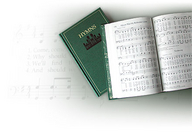 Follow the music director
Follow the music directorPlace your music on the organ in line of vision of the music director
Accompany congregational singing by playing both hands on the same manual
Play only manuals if playing the pedals is a problem for you
Play exactly what is written on the page. If you cannot read music notation, you should generally not accompany on the organ
Do not change harmony if the congregation sings in parts. Free accompaniments are permissible when the congregation sings the melody in unison and has been instructed to do so
Musical ornamentation must be restricted to passing tones that do not affect the written harmonic structure
Communicate with the music director ahead of performance on all detail matters pertaining to the assignment, i.e. how many verses, interludes between verses, tempo, volume, proper rhythm, etc
Practice privately during the week for every assignment until you can play each musical selection without a mistake
If you cannot play a certain hymn, talk with the music director for a possible change to a hymn you can play
Use key changes between verses only if you are totally sure of yourself and can play transitions smoothly
Cultivate good organ playing techniques in your hands and feet
Choose proper registration. 8' principal stops are the foundation. If you do not understand principles of registration, ask someone who knows